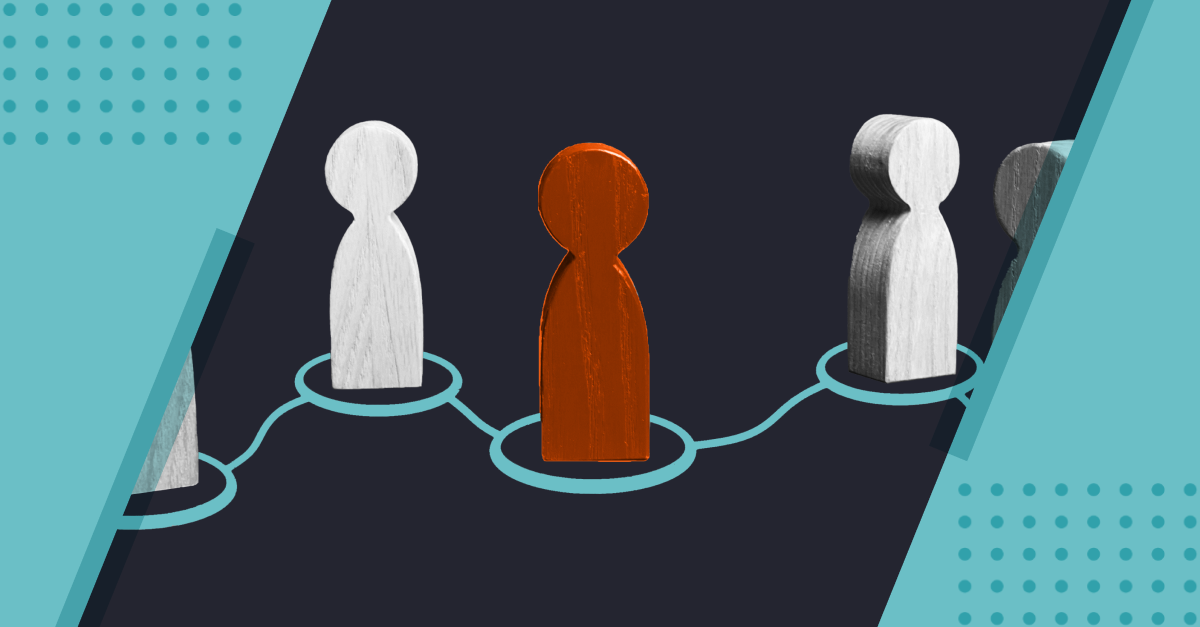.jpg)
b96f.jpg?width=684&name=shutterstock_1034122360%20(1).jpg) I'm not going to preach the importance of customer retention. We all know this by now. And we all know how much easier (and cost-effective) it is to retain and nurture an existing customer than to acquire a new one.
I'm not going to preach the importance of customer retention. We all know this by now. And we all know how much easier (and cost-effective) it is to retain and nurture an existing customer than to acquire a new one.
If you've read any of Equinet's latest content, you'll understand by now that the content marketing industry is in the midst of a disruption. If B2B businesses are to thrive in this new climate, they need to stop marketing and start publishing. But this requires new strategies, new processes and in some cases, new employees.
It's easy to neglect your customer retention strategy during this process.But we can't take our existing customers for granted.
The big question is, how do we keep our existing and loyal customers on board throughout this period of change?
Communicate your vision to everyone
While the focus of this post is on your customers, if employees are left in the dark and not communicated to properly, their output is going to suffer. Employees who feel disengaged or neglected will be less efficient, productive and effective at managing said customers.
You must start by communicating your vision to everyone - employees and customers.
A period of change can leave employees and customers feeling uncertain if leaders aren't transparent about their goals and vision. If you’re scaling your business but not your team with it, you're setting yourself up for major obstacles.
Customers will look at the culture of a business and assess their own cultural values against it. Culture is more than a HR buzzword these days. It is said that B2B businesses prefer to do business with companies that mirror their values and morals. When those values begin to falter, customers will be quick to pick up on any negative sentiment and flee before they run into any unfamiliarity.
It's important to cultivate a positive culture where anything unfamiliar is communicated deliberately and with certainty. Involve your customers and employees from the beginning and nurture them throughout the process.
Speak through rather than to your customers
Converting your customers into brand advocates will be a foundational goal throughout your journey to becoming a media brand.
Customers can aid in your creation of content, from customer testimonials (which could take the form of eBooks, blogs, interviews or videos), to podcasts and audio content, video case studies, interviews, testimonials, user-generated content - and the list goes on.
The rise in content diversity is the biggest contributing factor in the need for businesses to revamp their content strategies. UCG (User-generated content) describes any form of content that was created by consumers or end users. With this, you essentially start to build an eco-system of content that supports credibility, authenticity and trust.
Customers can engage, communicate and learn from each other. And when done correctly, UCG helps customers to gain exposure themselves - so it's a win-win. Customer generated content is known to precede:
- higher brand engagement
- increased conversion rates
- greater brand trust
Gather actionable data
Building real intelligence pertaining to who your customers are and what they’re experiencing throughout the buyer’s journey will be an essential component of your retention strategy.
Not only will you uncover insight into what they’re doing, but how and why. For example, if traffic on a landing page is disproportionate to the number of actual conversations - why are so many leaving before converting? This insight can inform your new publishing strategy. Would a piece of media such as a video be better placed here to aid the conversion process? Or perhaps a more compelling CTA (call to action) button?
Real intelligence will tell you which media formats are being embraced and rejected by audiences. There’s no right or wrong here, just experiment and use your most accurate data to assess the outcome of each variation. You might already do this, but now's the time to really ramp it up.
Be open to change
Many businesses pose a threat to themselves by clinging onto an inherent resistance to change. Understandably, this comes from fear of risk-taking and failure. But in the long run, this could cause you more harm than good.
Within reason, branch out and embrace new technologies and processes, trial new media, seek out new talent and channel your newfound knowledge back into the business to help customers understand your journey and make it easier for them to engage with those changes.
Encourage feedback
Speak with your customers and employees throughout this journey of change, and accept their feedback with an open-mind. When you have a strong vision and you know the steps YOU want to take to get there, it’s a hard pill to swallow when others don’t agree. But open-mindedness is crucial. Your view might not concur with that of customers, and ultimately, they are the lifeblood of your business, so take on board any comments or feedback and action it meaningfully.
Surveys and questionnaires or review platforms are a good way to encourage feedback, but offer anonymous channels too. This will help you get the most unfiltered, honest and most constructive feedback.
Customer retention outweighs customer acquisition in terms of cost, effort and resource. And as with any business evolution, loyalty can often be compromised as the focus shifts away from existing customers, employees and advocates. Maintain your customer retention strategy as a priority throughout your brand evolution by implementing these processes and watch your business thrive above competitors in the new media space.



